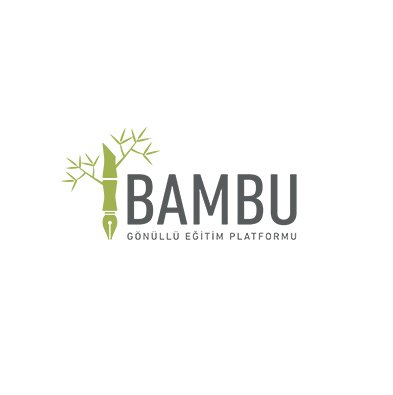Given the dynamic nature of today’s world and the rapid changes we’re experiencing, the learning needs of individuals and teams to remain competitive in these conditions are increasing day by day. The learning path can be defined as the structuring of the path that the participant follows to reach the desired level of development. This requires building many different and complex resources with the right organization to achieve the learning or competence development on a specific topic.
Learning paths are an important tool to enable participants to acquire new skills and knowledge in a logical and efficient way. A well-designed learning path contributes to a person’s professional growth and development. It also helps organizations to increase the productivity and performance of their employees by providing them with knowledge and skills that enable them to do their jobs better and more effectively, thus contributing to the overall success of the organization.
The most important steps to create a successful learning path:
Designing a learning path that can achieve the developmental outcomes you seek in your participants requires careful planning and the right organisation to monitor and evaluate change. In particular, the LMS used to monitor the process for both participants and programme leaders plays an important role. (I’ll return to this topic later in this article.) However, we can list the basic steps for designing a successful learning pathway as follows;
Set a concrete learning goal
The first step in designing a learning path is to set a learning objective. The learning objective should be clearly defined, specific and measurable. When you set a learning objective that is aligned with the individual goals of your participants and linked to the organisation’s key goals and strategies, the development programme becomes more meaningful to the participants and they become natural participants.
Learning objectives should be formulated in such a way that they give a clear idea of the knowledge, skills and competences that participants will acquire at the end of the learning pathway. Your participants should have no question marks about how they themselves will benefit from achieving these learning objectives, and they should be able to clearly feel how the intended outcomes will contribute to the development of their own performance. In this way, goals that they’re confident will contribute to their performance will help your participants to stay motivated and consistent on the learning path.
Focus on the needs of your participants
Once you have set the learning objectives, the next step is to identify the needs of the participants. In order to define the needs properly, you should take into account the participants’ existing knowledge, skills and experience, as well as the difficulties or limitations they experience in their daily lives. This way you can tailor the learning pathway to the individual needs of your participants and ensure that they’re faced with the right level of challenge to have the right developmental experience.
Recognising that each participant’s level of experience and knowledge is unique and that they have different learning needs is one of the most important keys to designing the programme effectively. Therefore, it’s important to identify the needs of the participants. The needs assessment allows you to address the individual goals of your participants and design a learning pathway that is tailored to the desired outcome.
Choose the right development activities
Once you have set the learning objectives and identified the needs of your learners, the third step is to select the development activities to be used in the learning pathway. There are many different activities that can be used for development activities, such as training, e-learning courses, workshops, mentoring, workplace learning activities, individual learning activities and project work. The development activities you choose should be engaging, interactive and aligned with the learning objectives.
If you plan the development activities in line with the learning objectives and in a way that meets the development needs of your participants, they’ll be able to feel the benefits they have gained in a tangible way and it’ll be easier for them to transfer the learning outcomes they have gained to their everyday life. Therefore, the learning activity should be designed to be fun, interesting and have a level of difficulty that enables participants to acquire new knowledge and skills and take developmental steps.
Monitor and evaluate progress
The final step should be to monitor your participants’ progress on the learning pathway and evaluate their development in relation to that progress. If you set up a proper monitoring and evaluation process, you can keep track of how much your learners are using the learning pathway and what progress they have made along the learning pathway. You can assess development at specific stages of the learning pathway and objectively represent both learner performance and the extent to which the development activities you have chosen serve the learning objective you have set. Giving regular feedback to your participants after these assessments will help your participants to become aware of their performance, maintain their motivation and stay on track towards the learning goal.
For those who manage the programme, on the other hand, monitoring of programme progress and evaluation results provide a concrete measure of programme success. The evaluation results you design at the times you set will show you both the extent to which the design you made on paper holds up in everyday life, and that they provide input for other programmes after the programme. In this way, you can use concrete data to see where the strengths of the programme you have designed lie and which parts you need to revise. At the same time, you have a clear indication of what steps you need to take for further development.
You can design a learning path with the basic steps I’ve described above, but it’s possible to extend the design for your participants who follow this learning path. The most important point to focus on to create this richness is the kind of experience your learners will have on this learning path. In order for your learners to have a varied learning experience at the cognitive level and to maintain their concentration throughout the learning pathway, you should create the right environment that brings together many different development tools. If your learners feel that they’re constantly confronted with similar activities that focus on the same learning strategy, their interest in the learning pathway will wane and they’ll lose motivation to apply the steps on that pathway. Likewise, content that focuses only on theoretical knowledge will lead to your participants not feeling the full benefit after a while. Therefore, you should use interactive activities and application areas that get your participants to internalise the acquired knowledge through application and develop lasting behaviour. These application areas should make your participants work hard by challenging them at the right pace, thus encouraging the development of their skills. In this way, your participants will feel the development and be motivated to follow the learning path.
Tips to make your learning journey effective:
In addition to the steps I’ve given above for designing a learning path, it’s worth mentioning a few little tips to help you make it more effective;
Make it accessible and flexible
Your participants (especially adults) have a very limited willingness to learn. On the other hand, when they engage in learning activities, they expect to spend a very specific amount of time and to get the most benefit for their needs in that time. Therefore, they need to be able to access the learning pathway you have designed quickly and seamlessly from as many platforms as possible. If they have difficulty accessing the actual content in the limited time they have allocated to the learning activity, they may quickly stop participating in the activity and this situation will come back to you as dissatisfaction + criticism. Designing a balanced learning path with different tools and development activities at different levels of interaction will increase the success of the learning path as your participants will be able to access it as intensively as possible.
At the same time, learners will want to participate in learning activities for the information they need. Rather than repeating the information they already know, they’ll prefer to spend the limited time they have available for learning on activities that relate directly to the development needs for the problem they’re facing. For example, if you’re designing a learning path for using Photoshop, you can measure the level of knowledge of your participants at certain stages and give them the opportunity to participate in the learning path according to their level of knowledge. For example, if you force a participant who has mastered the programme’s interface and knows the menus and application areas to do the learning activities in these basic steps, he’ll develop a negative perception towards the learning path and think that it doesn’t meet his needs. If you recognise this situation with a little practise and allow them to skip the activities at the basic level, your participant’s experience will change positively.
Enriching the experience with technology
Especially when designing learning paths that extend over a long period of time, your participants’ interest in the programme wanes after a while. A monotonous schedule and repetitive learning activities in a certain cycle lose their appeal over time and participants find it difficult to engage with the programme. You can combine different learning technologies to motivate your participants for the programme, diversify the learning experience and achieve the desired results more effectively. For example, you can use gamification mechanisms to make it easier for them to follow the theoretical information and sustain their learning, or you can use simulations that mimic real-life situations to provide them with exercises to internalise what they have learned, or you can use virtual reality applications that replicate the expected learning outcomes to give them opportunities to experience the intended behaviours and receive feedback.
Conduct assessments and exams
Even if you think you have made a correct design, you should make measurements by setting up milestones at certain points in the learning pathway to check that you have achieved the right outcomes for the goal and to make sure your learners know them. At the milestones you can set sub-goals for the learning objectives and make assessments based on these sub-goals. This way you can revise and activate the programme over time.
opportunity to learn from each other.
Create opportunities to learn from each other
Instead of limiting learning to the content you structure, you can ensure that your participants also contribute to each other’s development. You can create an environment where people involved in the same learning process can learn from each other’s difficulties, experiences and conclusions. You can get participants to support each other by sharing ideas. You can also bring together different participants with project work and increase their interaction with each other.
By incorporating these tips into the design of your learning pathway, you can make your participants’ learning processes more effective and enriching.
Types of learning pathways;
Learning paths can be organised in different constructs and transformed into a development plan that participants can follow. Basically, one can speak of 2 different types when organising a learning path.
Linear learning paths:
In linear learning paths, the participant takes part in a group of learning activities organised in a certain order, i.e. when he/she takes part in this learning path, he/she takes part in a hierarchy of learning activities in a certain pre-planned order. When he/she completes an activity, he/she gains access to the next activity. The programme manager can grant access to the next activity immediately or at a specific time. In the linear learning pathway, the participant must complete all learning activities.
In corporate learning processes we often see linear learning paths being used to combine and categorise many different contents on a given topic. For example, we can observe linear learning paths in programmes such as orientation courses, basic behavioural training (such as the Expert Development Programme) and the MT programme. Especially when the content can be categorised from simple to complex or from easy to difficult, the linear learning path is more effective. However, there is a basic criterion here: for the linear learning path to be effective, your participants must be homogeneous (at the same level).
Let’s now look at a simple example of how to create a linear learning path;
For example, let’s take a basic project management learning path and the 4 main trainings we use in this subject are suitable;
Basic Project Management Methodology
MS Use of Projects
Agile Approach
Scrum Master
In such a scenario, the participants first take part in a project management training. After completing this training, they attend an e-training for MS Project. After completing these two trainings, they take an exam and if they successfully pass it, they’re eligible to attend the Agile Approach training. After the Agile Approach training, they’re expected to participate in a real project and be assessed by the project manager. After they have developed their project delivery skills and reached a certain level of maturity, they attend the final Scrum Master training. After they have completed the entire training, they take part in a project management simulation. Two months after completing the entire programme, they undergo an assessment of the targeted learning outcomes.
One of the most common examples of linear learning pathways is the orientation programme. Unlike the example above, the contents in programmes like the orientation programme aren’t ordered from simple to complex. They consist of learning activities that participants have to complete within a certain period of time. To facilitate learning for new employees, the learning activities are presented to participants in a logical order. For example: Company history Company values Systems and procedures Legal training Occupational safety training.
Unlinear learning path:
In this type of learning path, not all content is prepared to be presented to participants in a fixed fiction. A learning path can be created where participants have the flexibility to complete certain steps according to their needs. In this way, participants should be able to use the learning process more efficiently. To achieve this flexibility, two methods are often used;
- All learning activities are listed and the participant can create a personal learning path for him/herself by choosing the activities he/she finds suitable. In this method, the participant can complete the learning path by completing only the activities of his/her choice. The most important factor for this method to work effectively is the participant’s awareness. Your participant will benefit from the programme if he/she objectively determines his/her level and chooses the right activities.
- The other method is to break down the main learning objective of the learning pathway and set goals. Participants are assessed at the very beginning of the programme and get a result about which of these sub-goals are strong and which need to be improved. Then the participant can complete the learning pathway by participating only in the activities where he/she can improve rather than in all learning activities. In this method, the effectiveness of the learning pathway is increased by making assessment the goal and sharing the specific assessment results with the participants.
In order to properly manage the learning experience, it’s important in both methods to divide the learning pathway into specific phases and to time these phases in a way that ensures a healthy delivery of the programme. Participants need time to complete the steps of the programme and internalise the gains. Some participants are more results-oriented and complete the whole programme as quickly as possible, while others drop out after a while and need a push to continue. In order to properly manage participants of both extremes and keep them on track, it’s useful to spread out the phases of the programme over certain periods of time and monitor this time.
Integrate the learning pathway into the LMS;
To be successful, it’s important that the learning path you design is understandable and accessible. At this point, learning management systems (LMS) are the most important solution for both programme managers and participants. If the LMS used is equipped with the right tools to both implement and monitor the learning pathway during delivery, it can allow the programme to be managed and monitored on a single main screen. This contributes to a more effective design of the learning pathway and easier accessibility.
Set the learning path;
The possibility to define many different types of learning activities in the LMS, to structure them holistically and to transform them into learning paths makes the scope and diversity of the programme visible. In this way it becomes easier to manage the programme and you have the possibility to talk to your participants about the whole programme.
When participants can see the whole learning path and know where they’re, they become aware of the effectiveness of the learning. Being able to visualise the programme in the LMS and allow participants to follow the programme from a single point increases awareness and makes it easier to stay on the learning path.
In addition to the holistic fiction, the LMS should have a flexible structure so that participants can personalise this fiction according to their own needs. At the same time, defining areas where people who have had experiences with the learning path can share them with others, and allowing them to add elements they have used or created themselves to the learning path, increases the effectiveness of learning.
Ensuring traceability;
Participants are more engaged when they can track the entire learning process and receive regular feedback on their progress. To trigger this engagement, it helps them to persevere consistently if they can immediately see in the LMS where they’re in the programme and are informed about the next activities and tasks on the learning path. Similarly, reminders in the LMS keep participants informed when they fall behind or drop out of the programme.
In addition, feedback on completed learning activities and tasks helps participants see their progress and stay motivated. With modules in the LMS where they can receive this feedback, the benefits of the programme can be communicated in a tangible way by recording participants’ progress on the learning pathway.
Interaction between the participants
Learning can be enhanced if participants can interact with each other through the LMS in a way that triggers peer learning. For example, at certain stages of the learning pathway, participants can meet in the forum to share their experiences. With modules such as leaderboards, badges or gamification mechanisms such as challenges, participants can encourage each other to interact in the learning process.
At the same time, modules such as exams and assessments can be created in the LMS and you can track participants’ progress together. Based on the results of these modules, you can control the homogeneous level of development of the group by proposing different contents to the participants.
You can create many different solutions for individual development needs by using LMS to design and manage learning pathways in the company. By ensuring that these solutions are integrated with each other, you can create organisational memory and develop quick and practical solutions for future development needs. In this way, you can improve the performance of the whole organisation and take a big step towards becoming a learning organisation.
Conclusion
Learning paths are an effective way for participants to acquire new skills and knowledge in a structured and specific logical pattern. By following the design steps and tricks in this blog post, you can create learning pathways that help to achieve participants’ personal and professional goals. Remember that you cannot ignore the individual differences of your participants and that it’s important to be flexible enough to accommodate these differences. With careful planning, well-structured delivery and effective evaluation, you can design a successful learning pathway that contributes to the organisation’s performance development.




















